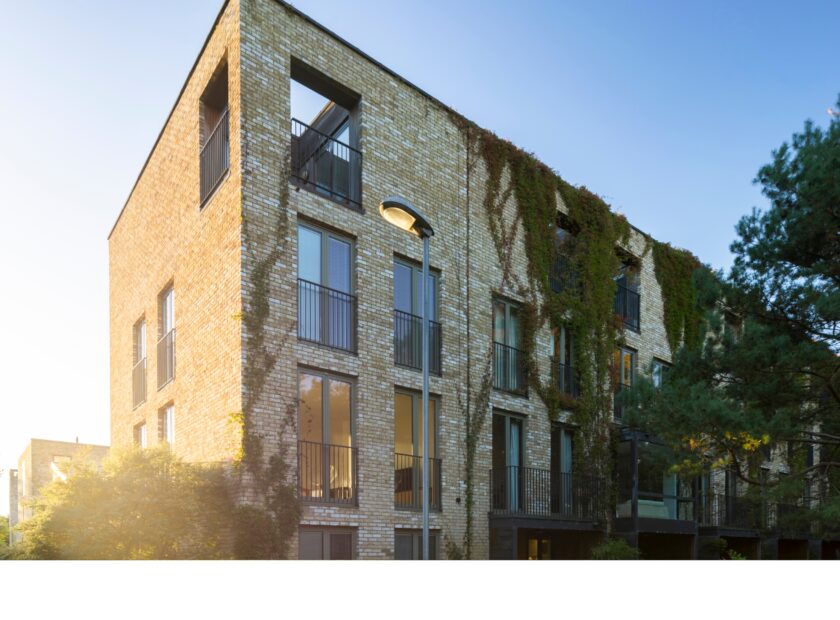I am one of those who believe that if the future is to be happier and better than the past, it depends on the character and health and habits of the people of this country, and I believe there is no sphere in which we can more directly influence the character and health and habits of the people than in the proper lay-out and development of our towns
The Lord Chancellor, Viscount Jowitt, Hansard HL Deb 04 June 1947 vol 148 cc123-96
Every planner I know shares Viscount Jowitt’s view that planning can be a force for good, the obvious and tangible example of this being the various urban extensions and regeneration projects being promoted up and down the country. A recent report into placemaking by Future Places Studio, sponsored by Farrer & Co along with Adam Architecture, considered some best in class examples of recent placemaking along with general themes and lessons learned.
As identified by the work of the Letwin Review, the Building Better Building Beautiful Commission, as well as recent work by Policy Exchange, there are considerable problems with the UK’s current approach to housing. In this blog, I aim to consider one of the problems with the UK’s approach, essentially that it prioritizes quantity to the detriment of quality.
The current approach
In the Future Places Studio report, research was identified showing that in cases where the homeownership dream becomes a reality, problems quickly arise. New-build homeowners have increasingly encountered problems, with 63% of UK adults worried about the quality of their homes and 45% dissatisfied with the snagging process, according to the Homeowners Alliance[1]. Research by Shelter[2] tells the same story and the Home Builders Federation also has found that over 45% of people would not consider buying a new-build home[3].
No government set out to facilitate this crisis of quality. The major problem for placemaking in the UK is the UK government’s focus on numbers This Government’s current policy for England of ushering in a period of mass housing construction to deliver 300,000 new homes by the mid-2020s, is characterized by short-term, profit-first thinking, which has only exacerbated the housing problem. The most recent incarnation of this approach being schemes such as ”Help to Buy”, as well as the expansion of office to residential permitted development rights which has helped boost numbers but with reports of some developments of dubious quality.
Encouraging housing supply is not in itself the problem, there is a housing crisis of numbers. What is a problem is the crisis of quality which could be a side effect of a focus on supply as being mainly about the numbers. The Government is aware of this, the Letwin Review, the Building Better Building Beautiful Commission and approaches to the national design guide are movements in the right direction. However, these alone will not solve (or prevent) a housing quality crisis.
A new patient approach
At a macro-level, this housing quality crisis can only be resolved with time, thought and by shifting towards a concept of socially responsible profit, which recognises the complexities of housing demand and good placemaking. In essence, it can be described as a “patient approach”. This approach addresses the community as a whole including its public spaces (including potential renters and buyers) and prioritises quality and sustainability over quantity. Its overall aim is to produce economically, socially and environmentally sustainable places that go beyond meeting the need for a place to sleep and by accepting higher up-front costs and lower profits in the short term, the approach can be characterised as being socially and environmentally responsible. Additionally, it can be considered as a vehicle for social mobility rather than segregation, prioritising good design that respects local history and embraces local supply chains.
For example, one way in which the approach works in practice can be seen in the approach to schools. While some developers will see the requirement to provide a school as a burden, the report and its underlying research shows that investment is in fact an opportunity for communities. People are willing to pay a premium if they know a good school is being developed, therefore investing in a new school of quality can boost the profitability of a scheme. The best schools increasingly deliver not just on pupil education but community leisure, culture and recreation activities.
Supporting a patient approach
While the placemaking report showed how a patient approach can work in practice it’s not for everyone. Financial pressures on housebuilders and landowners necessitates a path of least resistance approach to generating revenue. However, the application of a patient approach which looks to also build a legacy can be widened with a few tweaks to the planning system:
Firstly, local authorities should be empowered to approach and open a dialogue with landowners, including offering incentives to bring land forward in the call for sites. Developers with a proven track record of reliability, trustworthiness and delivering quality should also receive recognition within the planning system and in the processing of their planning applications.
In addition, the Community Infrastructure Levy (CIL) should be modified to reward quality and commitment to being socially and environmentally responsible and a Government backed national infrastructure investment fund, perhaps drawing on a percentage of CIL receipts from around the country, could provide finance to projects which meet certain criteria. This could include criteria around quality and sustainability; and for areas where land values makes it difficult to meet development plan aspirations provide additional support.
Reform of taxation, which incentivises landowners to defer profits to secure enhanced quality housing, could also hugely benefit the planning system.
The patient approach and Coronavirus
Our world now faces an era changing crisis in the shape of the Coronavirus. Dormitory towns designed to feed a major city (such as London, Birmingham or Manchester) are not appropriate in a time where working from home is genuinely embraced along with the social infrastructure that this will undoubtedly require.
Good placemaking, which adopts the patient approach, allows for decentralisation. Better design, wider streets and larger greener spaces, all make for a happier place to live, especially in a world where isolation and staying within your town might be necessary for the foreseeable future. With a patient approach, we can avoid people living in dormitory towns with a square of grass and a swing or slide passing for “green space”. We can also meet the need to deliver more community focussed facilities such as cafes, bars, retail and shared work centres that anticipate what the world of tomorrow will need.
A patient approach is part of the solution to the housing quality crisis in the post-coronavirus era and is the best way to meet the challenges of a world where working from home may no longer be a choice but a great social and economic opportunity.
This is a Guest Blog, and the views expressed here do not necessarily reflect those of the TCPA.
Anthony McNamee is an Associate at Farrer & Co, and his co-authored report ‘Placemaking: A Patient Approach to Creating Communities’ can be found here.
[1] “The HomeOwner Survey 6 years of housing concern trends with spotlight on leasehold, generation rent, new homes & home improvements” Homeowners Alliance; BLP, RESI; 2019
[2] Rigged’ housebuilding system means eight in ten families cannot afford new home, says Shelter”. Shelter; 2017.
[3] https://www.hbf.co.uk/documents/6698/Why_buy_new-_Home_buyer_intentions_and_opinions_-NHW16_FINAL.pdf



